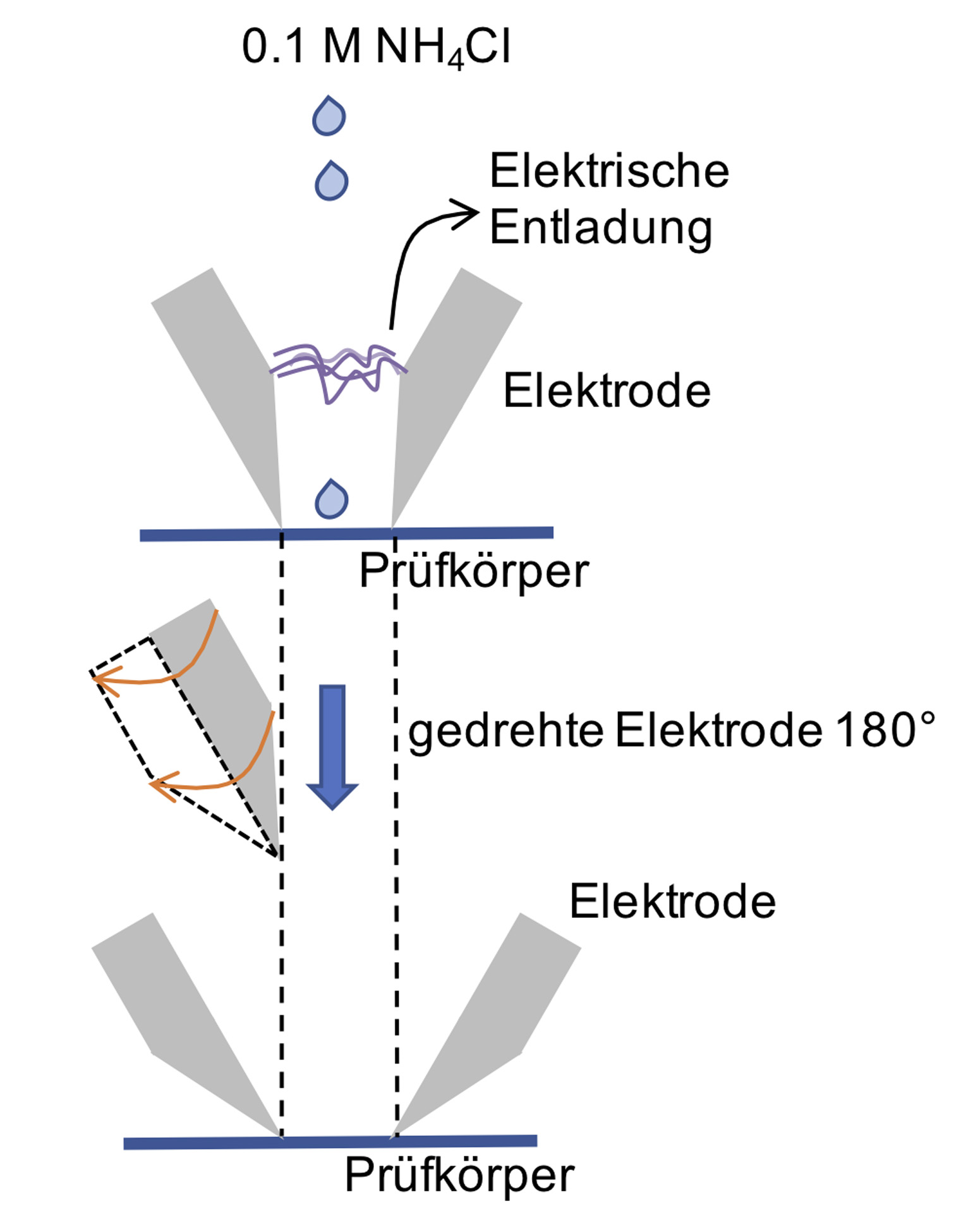01/19/2022 | Product News
Beyond the limits of the CTI index: Kuraray measures tracking resistance of 925 Volts on Genestar™ PA9T
Testing at voltages of up to 1,000 V: Kuraray is developing new methods of testing the insulating properties of materials above the previous limit of the CTI index – Genestar™ PA9T exhibits enormous tracking resistance of up to 925 Volts.
Hattersheim, January 19, 2022. Electromobility has a key role in holding back climate change. Insulating materials with extremely high tracking resistance are required for the development of high-performance electric vehicles. The CTI index has become established in the industry for measuring insulating strength. One problem is that so far is this standardized measuring method could only be used to determine the tracking resistance of insulating materials at up to 600 Volts (V). For many applications such as electromobility that is far too low. To measure tracking resistance on the surface of its high-performance polyamide Genestar™ PA9T, Kuraray, one of the world's leading speciality chemicals producers, which has its European headquarters in Hattersheim, Germany, adapted the method to allow testing of materials at voltages of up to 1,000 V for the first time. In these tests, Genestar™ exhibited excellent tracking resistance at up to 925 V, so the material can be used to produce smaller, lighter weight connectors for high-voltage applications.
“Genestar™ PA9T has excellent electrical and mechanical properties, for example very good heat resistance and dimensional stability. Therefore, our polyamide is already the material of choice for many applications in the electronics and automotive sectors, for instance for high-quality SMT connectors,” says Andreas Weinmann, Business Development Manager for Genestar™ at Kuraray. “Our latest test results confirm that tracking resistance on the surface of this material is well above the level that can be measured using the CTI index.” The CTI index shows the highest voltage at which the test specimen does not generate a current on a damp surface. At present, the maximum voltage used in this method is 600 V. For comparison: engines and batteries in modern electric vehicles often use voltages of up to 800 V. Andreas Weinmann: “To test the limits of Genestar™ PA9T, our research team looked for a way of determining tracking resistance above this level. That was the basis for the test setup.”
CTI index: electric arc discharges in the air prevent measurement at over 600 V
To measure tracking resistance using the CTI index, two platinum electrodes are positioned 4 millimetres apart on a conditioned test specimen. 50 droplets of a standardized electrolyte solution are dropped onto the electrodes under voltage at 30-second intervals. According to the method defined in IEC standard 60112, the damp test specimen fails the insulating test the leakage current exceeds 0.5 Amperes (A). In its test series on Genestar™ PA9T, Kuraray's research team observed that the narrow gap between the electrodes caused premature arc discharges at higher voltages. This suggests that the current leakage is caused by arcing, rather than the conductivity of the material.
Tracking resistance of up to 925 V: Genestar™ PA9T for lighter weight electric cars
To avoid such premature discharges, the researchers rotated the platinum electrodes by 180 degrees (see diagram/Photo 3). “With this modified test setup, our research team was able to measure tracking resistance at up to 1,000 V,” explains Andreas Weinmann. “Our colleagues tested the modified method on various grades of our polyamide and repeated the tests many times. The tests showed that the halogen-free polymer type GP2300s with 30% glass fibres has excellent tracking resistance. Current leakage only exceeded 0.5 A at a voltage of 925 V.” Thanks to its extremely high tracking resistance, this particularly robust, heat-resistant polyamide from Kuraray can reduce the creepage between electrical conductors, allowing the manufacture of far smaller and lighter connectors for high-voltage applications such as battery and drive technologies for electric vehicles.
Encouraging dialogue in the industry on measuring tracking resistance
The trials provided another finding: the orientation of the glass fibres in the test specimen has a significant influence of tracking resistance. The more uniformly they are oriented in a single direction, the lower the tracking resistance. “Many of the factors affecting the results obtained have not yet been clarified and the modified test setup does not currently meet the requirements of the CTI index,” says Andreas Weinmann. “We want our trials to inject impetus into the industry. The CTI index no longer meets the demands made, for example, by the automotive industry. Our results are an important step towards establishing a new method of measuring creepage at higher voltages. Thanks to dialogue with industry representatives, we have already received a good deal of constructive feedback and many suggestions for optimisation, which we will be integrating into further trials.”
About Kuraray
Established in 1991, Kuraray Europe GmbH is based in Hattersheim, near Frankfurt am Main, Germany. In 2020 the company generated annual sales of EUR 593 million. It has more than 800 employees in Germany at its sites in Hattersheim, Frankfurt and Troisdorf. Kuraray is a global speciality chemicals company and one of the largest suppliers of industrial polymers and synthetic microfibres for many sectors of industry. Examples are Kuraray Poval™, Mowital®, Trosifol® and Clearfil™. Kuraray Europe also has around 215 employees at six other European sites. They are also working on the development and application of innovative high-performance materials for a wide range of sectors, including the automotive, paper, glass and packaging industries, as well as for architects and dentists.
Kuraray Europe is a wholly owned subsidiary of the publicly listed Kuraray Co., Ltd., which is based in Tokyo, Japan, and has more than 11,200 employees worldwide and sales of EUR 4.4 billion.
Dr. Bettina Plaumann
Head of KEG Communications & Marketing
Kuraray Europe GmbH
Philipp-Reis-Straße 4
65795 Hattersheim am Main, Germany
Phone: +49 69 305 85797
Email: Bettina.Plaumann(at)kuraray.com
Internet: www.kuraray.eu
Christopher Kampfmann
Wortwahl – Agentur für Unternehmens- und Onlinekommunikation
Bahnhofstraße 123
63263 Neu-Isenburg, Germany
Phone: +49 6102 36678-22
Email: kampfmann(at)wortwahl.de
Internet: www.wortwahl.de
>> Download this press release as an adobe acrobat document here
Captions/source of photos: Kuraray

“Tests by our research team show that the tracking resistance of our polyamide Genestar™ PA9T is far higher than can be measured using the CTI index. That allows the production of smaller and lighter connectors for electric vehicles,” says Andreas Weinmann, Business Development Manager for Genestar™ at Kuraray. “The CTI index no longer meets the demands made, for example, by the automotive industry. With our tests, we want to inject impetus into the industry.”

Robust polyamide for high-voltage connectors: Genestar™ PA9T has very good dimensional stability and mechanical resistance, low water absorption and high heat resistance. Therefore, it is already the material of choice for high-quality connectors in the electronics and automotive industries, for example, for FAKRA connectors (photo). Kuraray's new tests show that the material has tracking resistance at up to 925 V - for smaller, lighter connectors for high-voltage applications, e.g. in electric vehicles.

Avoiding arc discharges: so far, the CTI index could only measure tracking resistance at voltages of up to 600 V. Reason: at higher voltages there are premature arc discharges between the electrodes. To avoid this, Kuraray's research team rotated the electrodes through 180 degrees.

 News Archive 2024
News Archive 2024